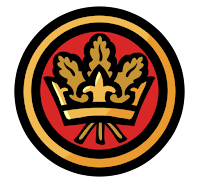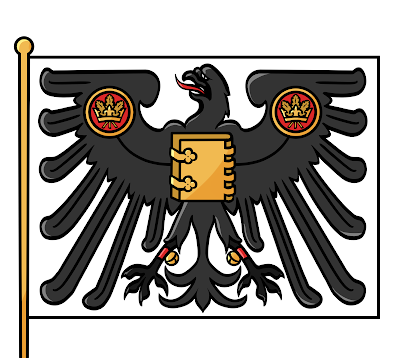 |
An impromptu December gathering of members of the
American Heraldry Society in Alexandria, Virginia.
|
The year 2023 marked a decided turn for me in my heraldic journey. After putting off what seemed inevitable, I finally embraced a 10-year challenge to finish researching the heraldic work of Pierre de Chaignon la Rose (1872-1941). Frankly, this resolution and goal changed everything for me. Towards the end of late summer, motivation crashed upon me like gigantic tidal waves pushing me deeper into la Rose's world. A virtual explosion of articles seemingly sprang up from my finger tips. With sharper research skills and the benefit of being very close to my data, I was making new connections and analyses at a startling pace.
Furthermore, I learned to follow my intuition when identifying whether or not a given coat was worth tracking down evidence--with sufficiently trained eyes, I can now spot a la Rose design fairly easily. Finding new arms for my data, however, has proven frustratingly painful given that many of these corporate arms are from closed institutions with scare evidence. Thus, I made the ultimate decision to set a timer on data collection, and begin moving forward with analysis and writing. I knew I could either spend the rest of my life tracking down la Rose's work, or move ahead with data in hand. I truly hope that others will be capable of following my methods and add to the body of la Rose's heraldic work in time.
My goal from the very beginning is to give the herald his proper place in history. This past year has given me a renewed vigor in seeing this mission through.
Research Highlights
Among the many breakthroughs I experienced this year regarding my research on la Rose, I can only write one word, CHICAGO.
For a number of years, I kept having a gnawing feeling regarding several arms located in Chicago, arms that I believed were designed by la Rose but could not prove his work. All that changed thanks in large part to the archivists from the Women and Leadership Archives of Loyola University Chicago who held a letter from la Rose dated July 19, 1930 giving answers to my long-held questions. To read an analysis of these corporate arms, please click here.
 |
The arms of Kenyon College (Gambier, OH) designed by Canon Watson between 1907-1908
appearing in the 1917 yearbook, The Reveille. Watson was the first in the US to create the "unifying chief" for scholastic heraldry. Source: Kenyon College Archives. |
Furthermore, Chicago presented a rather interesting plot twist regarding the arms of the University of Chicago. Following an analysis I completed on the arms of Kenyon College and the work of The Rev. Canon Orville E. Watson (1857-1951), I began revisiting all arms in my data devised between 1900-1915 that employed chiefs--I wanted to determine whether or not Canon Watson was indeed the first herald to use this technique in US scholastic arms. To read about Canon Watson and the heraldry of Kenyon College, please click here. This led me back to Chicago. After stumbling upon some printed material in my files, I realized something was off regarding la Rose's attribution as the designer of the university's coat and off I went. It turns out that la Rose did not in fact design the final version of arms used presently by the university, and the evidence blew my mind. To read about the arms of the University of Chicago, please click here.
Simply put, analyzing all that rich data was absolutely fascinating in my mind and represented some significant breakthroughs for our field. While I have thankfully experienced other such breakthroughs, I've decided to save those for the book.
Finally, I remain indebted to countless archivists across the US and Canada for their generous time and research assistance. I received a lot of artifacts, correspondence, and data which helped fill in so many gaps in my research on la Rose. After so many discoveries I had to share and used this blog to selectively post my findings.
Sharing My Research
.PNG) |
The arms of the
University of the South (Sewanee, TN),
rendered by Dimitri Prica. |
La Rose research aside, I had two lingering issues that I needed to address and overhaul--articles regarding the heraldry of my
alma maters. Readers might be interested to know that, by far, the two most visited articles share the stories of the armorial bearings of Hampden-Sydney College and the University of the South. Knowing this, I wanted to overhaul those articles with updated data and emblazonments.
To read the story of how Hampden-Sydney College received its arms, please click here. Finding digital emblazonments of Sewanee's heraldry was virtually impossible, so I commissioned two digital heraldic artists for complete sets in order to make these beautiful arms more accessible.
Please click here to learn about the heraldry of Sewanee. It was important to me to do justice to both of my schools, and I hopefully accomplished that through my work.
I was deeply honored to have several opportunities to present on US heraldry this past year. Co-presenting with Paul Campbell from the College of Arms Foundation on the heraldry of the Ivy League was a bright moment this past fall. I especially enjoyed the challenge to present at my daughter's high school earlier this month, sharing facts and my love of this subject with those students was definitely a personal highlight.
As I continued to fire up my laptop and post more regularly, I quickly began to build an audience of heraldry enthusiasts and this led to my final highlight.
Building Community
A significant highlight for me this past year was being elected to serve on the American Heraldry Society's Board of Governors, a community that I've been a part of since 2014. Additionally, I was appointed to lead our membership committee and we've already been hard at work, recently completing the Society's first member survey.
The data we collected is both rich and revealing for the Board. I thoroughly enjoy mixing my research background and professional non-profit experience to help advance the work of the Society. I'm enjoying my new volunteer leadership role and hope to make meaningful contributions.
The pandemic clearly changed our human experience and the methods in which we connect and communicate with others. While Zoom has its benefits, there is nothing that could ever replace live human interaction. Earlier this month, I had the great fortune to finally meet several members from the American Heraldry Society in-person for the first time. While I've spoken on the phone and exchanged numerous emails with several, I had never actually met these heraldry enthusiasts before.
What's Next
The coming year promises to hold many exciting developments which I hope to share in time. With many exciting developments in the pipeline for the American Heraldry Society, the International Congress of Genealogical and Heraldic Sciences coming to Boston in September, and more research breakthroughs on the horizon, the new year will keep me busier and engaged like no other. For now, I want to thank all my readers for your support and encouragement to keep moving forward. Onwards!

.png)





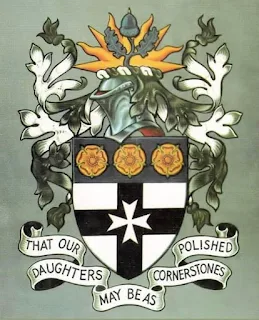
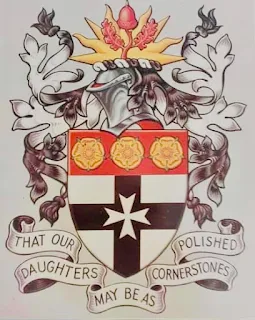



.PNG)
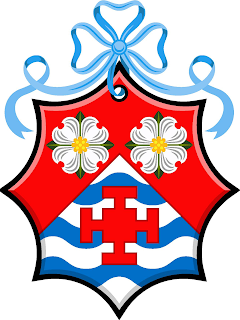



.PNG)
